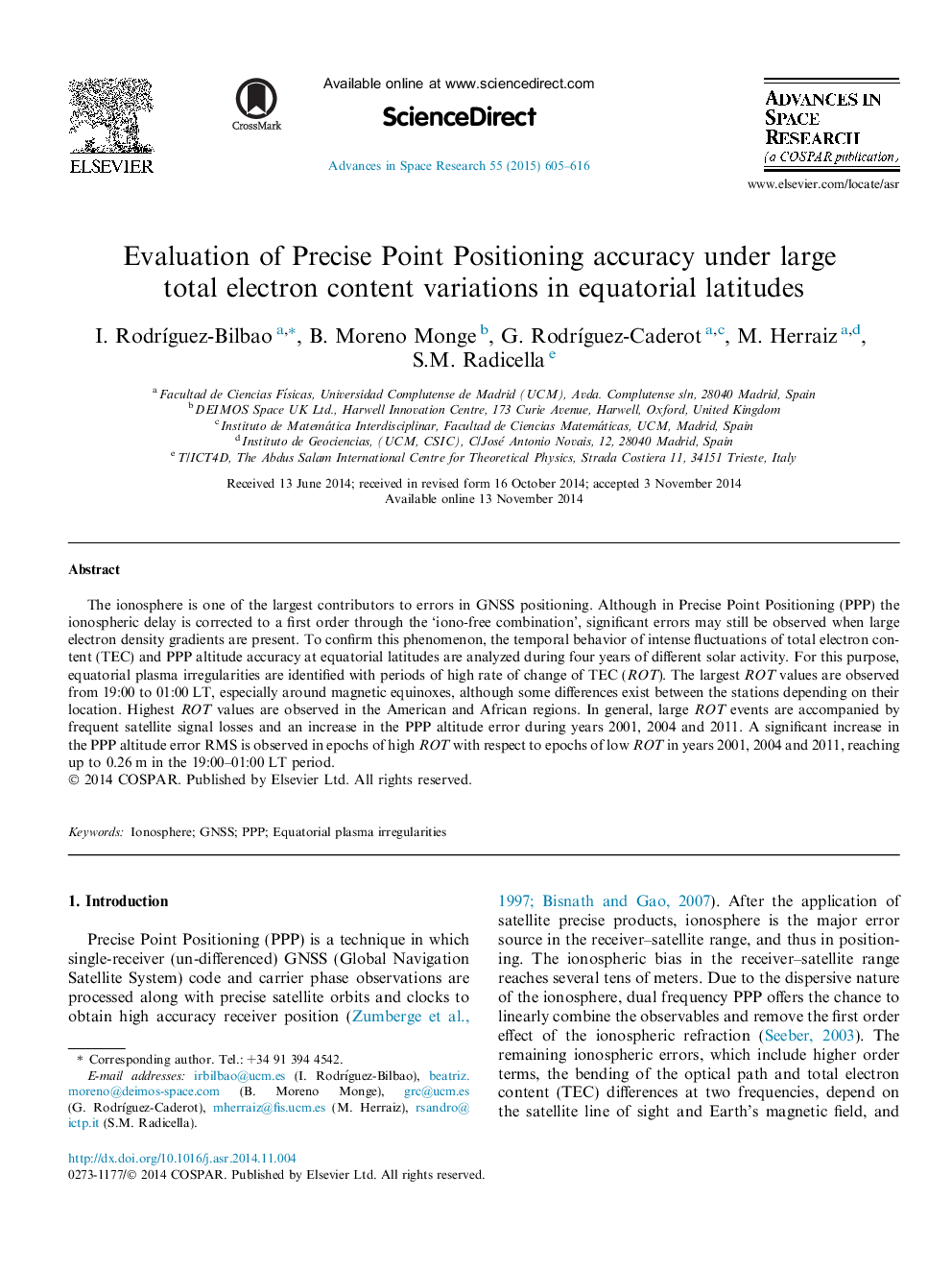| Article ID | Journal | Published Year | Pages | File Type |
|---|---|---|---|---|
| 1764303 | Advances in Space Research | 2015 | 12 Pages |
Abstract
The ionosphere is one of the largest contributors to errors in GNSS positioning. Although in Precise Point Positioning (PPP) the ionospheric delay is corrected to a first order through the 'iono-free combination', significant errors may still be observed when large electron density gradients are present. To confirm this phenomenon, the temporal behavior of intense fluctuations of total electron content (TEC) and PPP altitude accuracy at equatorial latitudes are analyzed during four years of different solar activity. For this purpose, equatorial plasma irregularities are identified with periods of high rate of change of TEC (ROT). The largest ROT values are observed from 19:00 to 01:00Â LT, especially around magnetic equinoxes, although some differences exist between the stations depending on their location. Highest ROT values are observed in the American and African regions. In general, large ROT events are accompanied by frequent satellite signal losses and an increase in the PPP altitude error during years 2001, 2004 and 2011. A significant increase in the PPP altitude error RMS is observed in epochs of high ROT with respect to epochs of low ROT in years 2001, 2004 and 2011, reaching up to 0.26Â m in the 19:00-01:00Â LT period.
Keywords
Related Topics
Physical Sciences and Engineering
Earth and Planetary Sciences
Space and Planetary Science
Authors
I. RodrÃguez-Bilbao, B. Moreno Monge, G. RodrÃguez-Caderot, M. Herraiz, S.M. Radicella,
